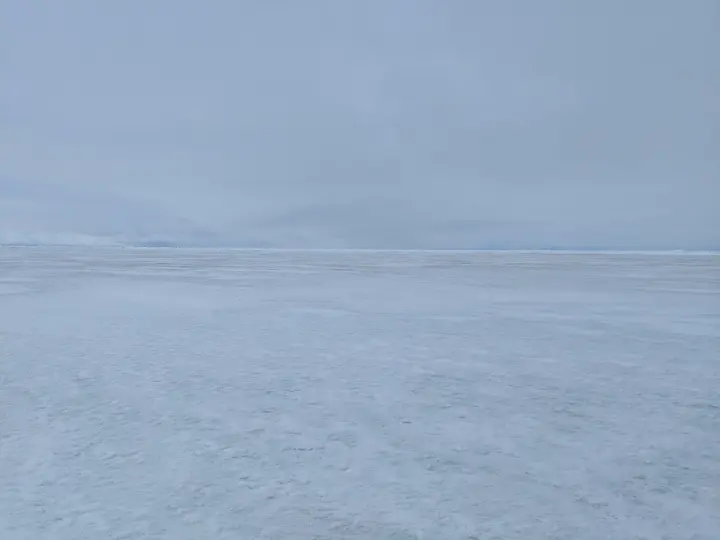
Sikuliaviniq - Former Sikuliak
Indigenous Knowledge
Sikuliaviniq ᓯᑯᓕᐊᕕᓂᖅ 'It used to be sikuliak, now it is thicker, not wavy anymore, up to 1 foot thick and snow accumulates on top.' (Sanikiluaq, Nunavimmiutitut, Sanikiluaq Siku Terminology Workshop 2018)
Tuvaruaq ᑐᕙᕈᐊᖅ ‘Getting thicker, not yet tuvaq.’ (Mittimatalik, North Qikiqtaaluk, Sikumiut Committee, Wilson and Arreak 2022: 83)
Tuvaruarjuqtuq ᑐᕙᕈᐊᕐᔪᖅᑐᖅ ‘sea ice that is becoming solid landfast ice; meaning "it is now partly tuvaq"; no snow has accumulated on this ice; approx 6-7 inches [btwn 15-18cm] thick’ (Iglulik, North Qikiqtaaluk, Inuit Siku Atlas)
Sikuvik 'Thicker ice is then called siku, a general term for sea ice, sikuvik (approximately 1 foot thick), and finally tuvaq (thick landfast ice, anything thicker than sikuvik).' (Iglulik, North Qikiqtaaluk, Inuit Siku Atlas)
Western Knowledge
Grey-White Ice ‘Young ice 15-30 centimetres thick. Under pressure it is more likely to ridge than to raft.’
Young Ice ‘Ice in the transition stage between nilas and first-year ice, 10-30 centimetres in thickness. May be subdivided into grey ice and grey-white ice.’
.svg)